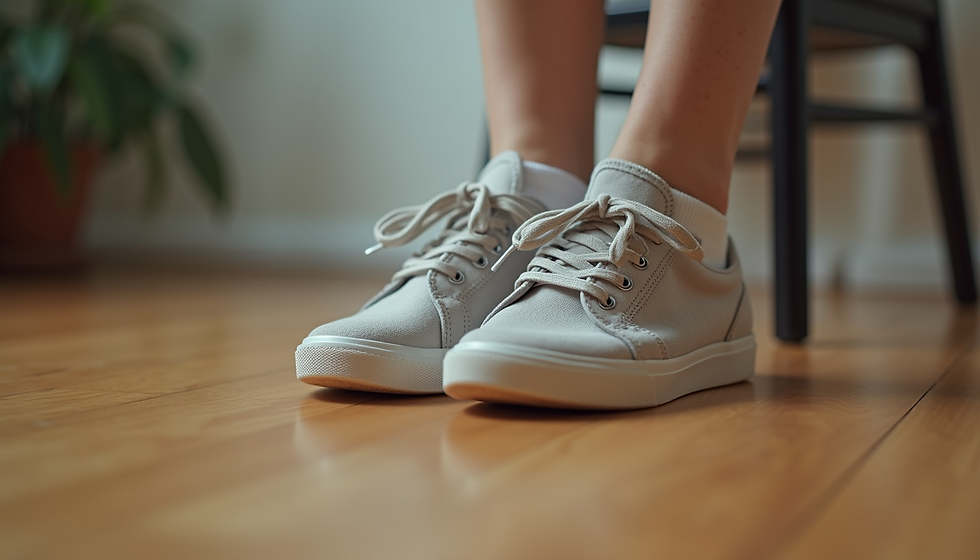Ultimate Guide: How to Determine If You Qualify for Diabetic Shoes and Get Fitted
- Asher Brow
- Dec 13, 2024
- 3 min read
Living with diabetes brings various challenges, and foot health is one crucial aspect that often goes unnoticed. Diabetic footwear is specially designed to reduce pressure on the feet and prevent serious complications. If you or someone you care about is unsure about qualifying for diabetic shoes and the fitting process, this guide will help you understand what to do next.
Understanding Qualification Criteria
Before exploring how to get fitted for diabetic shoes, it is essential to know the qualification criteria. Generally, these must be met:
Diagnosis: You need a formal diabetes mellitus diagnosis confirmed by a healthcare provider. For example, if you have type 1 or type 2 diabetes, this will serve as your primary eligibility requirement.
Previous foot ulcers: Studies indicate that around 15% of people with diabetes will develop foot ulcers.
Amputations: Following an amputation, proper footwear is crucial to prevent additional complications.
Poor circulation: This can lead to severe outcomes like gangrene.
Neuropathy: About 60-70% of people with diabetes have some form of nerve damage, increasing the risk of injury.
Foot deformities: Conditions such as bunions and hammertoes require custom footwear.
Foot Condition: You must have certain foot conditions to qualify for specialized footwear, including:
These conditions raise the likelihood of foot injuries, making diabetic shoes essential.
Physician's Prescription: To proceed, you must get a prescription from a qualified healthcare provider, such as a podiatrist or physician. The prescription should clearly state the need for therapeutic shoes, anchored in your specific foot problems.
Understanding these criteria lays the groundwork for the steps needed to get your diabetic shoes.
Steps to Get Fitted for Diabetic Shoes
After confirming you qualify, follow this streamlined process to get fitted for diabetic shoes:
1. Schedule a Consultation
Start by booking an appointment to assess your unique needs. This consultation offers a chance to discuss any foot concerns and explore your insurance coverage options in-depth. For instance, knowing whether your insurance will fully or partially cover costs can ease financial concerns.
2. Documentation Preparation
Preparing your documentation is vital. You will need:
A physician’s prescription for therapeutic shoes.
Supporting medical records that explain your foot condition.
Bringing a summary of past treatments or foot issues will provide helpful context during the consultation.
3. Insurance Verification
Verifying your insurance coverage is critical. Bring up your benefits for diabetic shoes during your consultation. Around 80% of people with diabetes worry about costs associated with specialized footwear, so understanding your coverage options can significantly ease your mind.
4. Fitting and Selection
Once your eligibility is established and insurance is verified, it’s time for the fitting. Certified shoe fitters will take precise measurements of your feet and help you select shoes tailored to your needs. Remember, comfort and support are essential, so communicate any concerns you have about fit or style.

5. Submission and Approval
After choosing your diabetic shoes, your claim will be submitted to your insurance provider. Professionals like Iconic Care will handle the paperwork, ensuring everything is completed properly for approval.
6. Delivery and Follow-Up
Once approved, your diabetic shoes will arrive at your home. Follow-up appointments are essential to check the fit and address any initial concerns, ensuring your shoes remain comfortable over time.
Communicating with Your Doctor
Talking to your healthcare provider about needing diabetic shoes can feel intimidating. Here are some tips for having that conversation:
Be Honest About Your Condition
Share any existing foot problems or concerns. If you experience foot pain, numbness, or have noticed changes in your foot shape, stating these symptoms allows your doctor to gauge the urgency of your need.
Ask Direct Questions
Do not hesitate to ask if diabetic shoes are necessary for your situation. A straightforward question can clarify any uncertainties.
Provide Documentation
If you have previous documentation regarding your foot health, share it with your doctor. This evidence strengthens your case for needing specialized footwear.
Utilize Pre-filled Forms
Ask about pre-filled forms for authorization of diabetic shoes. Companies like Iconic Care can assist in navigating these forms, making it easier to incorporate your doctor's recommendation into the process promptly.

Finding the Right Fit for Your Foot Health
Determining if you qualify for diabetic shoes relies heavily on understanding your health condition and consulting your physician. Remember that qualifying for therapeutic shoes is a vital resource you should not skip.
Taking charge of your foot health and being open with your doctor are essential steps toward finding the right diabetic shoes. Proper footwear offers the comfort and support needed to prevent diabetes-related complications. Don’t let foot problems hold you back: prioritize your health and take steps to maintain it, one step at a time.


Comments